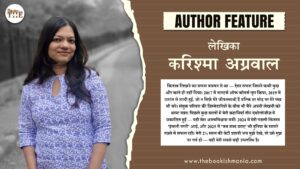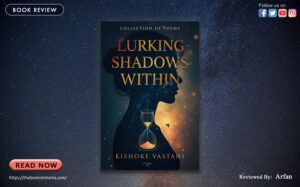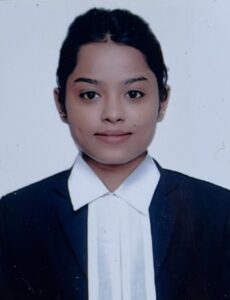
Abstract
The vibrant world of Punjabi folk music, steeped in tradition yet ever-evolving, offers a unique insight into the cultural heartbeat of Punjab. This study embarks on an in-depth exploration of the genre’s transformation, guided by the legacies of three iconic artists: Surinder Kaur, Asa Singh Mastana, and Kuldeep Manak. Each of these maestros has played a crucial role in defining Punjabi folk music, infusing it with distinctive vocal styles, rich storytelling, and innovative genre experimentation. Through a multi-faceted approach that includes historical, biographical, and musical analysis, this research examines how Punjabi folk music has preserved its roots while embracing modern influences, including electronic beats and global styles. The study also investigates how these evolving sounds resonate with contemporary audiences and what these responses reveal about the genre’s authenticity and cultural significance.
In addition, this paper delves into the narratives embedded within Punjabi folk music—tales of rural life, love, and valor—that have sustained its relevance across generations. By analyzing audience reception and the genre’s adaptive trends, this study illuminates the intricate balance between tradition and innovation that characterizes Punjabi folk music and anticipates its future trajectory. Through this exploration, the research aims to enrich the understanding of Punjabi folk music’s role in shaping cultural identity and preserving a heritage that continues to inspire and evolve.
Keywords
Punjabi Folk Music, Evolution, Cultural Identity and Music, Traditional and Modern Fusion, Historical Roots of Punjab, Music, Audience Reception and Global Influence, Lyrical and Vocal Techniques in Folk.
Problem Statement
Despite the rich cultural heritage of Punjabi folk music and the profound contributions of legendary artists like Surinder Kaur, Asa Singh Mastana, and Kuldeep Manak, there is limited comprehensive research on how this genre has navigated the interplay between tradition and modernity. The evolving landscape, marked by the infusion of global influences and electronic elements, presents a gap in understanding how traditional Punjabi folk music adapts while preserving its core identity. This study seeks to systematically analyze the historical, cultural, and musical impacts of these artists, explore contemporary trends, and assess the audience’s reception of fusion elements, ultimately examining how these dynamics shape the future trajectory of Punjabi folk music.
Objectives
1. Uncover the Legends: Dive deep into the lives and artistry of Surinder Kaur, Asa Singh Mastana, and Kuldeep Manak, exploring how their unique styles and voices shaped Punjabi folk music’s soul.
2. Trace Tradition’s Path: Illuminate the historical journey of Punjabi folk music, tracing its roots from ancient rural celebrations to its rise on global stages.
Research Questions
1. How have Surinder Kaur, Asa Singh Mastana, and Kuldeep Manak individually contributed to the identity and development of Punjabi folk music?
2. What cultural, historical, and social themes are reflected in Punjabi folk music, and how do these themes resonate across generations?
Introduction:
The rhythmic heartbeat of Punjab echoes through its folk music, a harmonious blend of tradition and evolution that resonates across generations. This research paper embarks on a captivating journey into the vibrant tapestry of Punjabi folk music, guided by the enduring legacies of Surinder Kaur, Asa Singh Mastana, and Kuldeep Manak. These legendary artists, each a maestro in their own right, have not only etched their names into the annals of Punjabi musical history but have also woven threads of tradition into the evolving fabric of the genre.As we navigate through the intricate melodies and lyrical narratives, the “Nightingale of Punjab,” Surinder Kaur, emerges as a pivotal figure whose soulful renditions have become synonymous with the genre. Alongside her, Asa Singh Mastana’s distinctive style and powerful voice resonate, leaving an indelible mark particularly in the realms of Heer and Kafi. The modern touch infused by the iconic Kuldeep Manak further propels the genre into new horizons, influencing subsequent generations with his energetic performances and genre experimentation.This research endeavors to not only unravel the historical and cultural impact of these luminaries but also to dissect the contemporary trends shaping Punjabi folk music. From the rhythmic beats of Bhangra to the graceful movements of Giddha, the genre narrates tales of love, valor, and rural life. Moreover, the fusion of traditional elements with modern styles, such as the integration of electronic beats and global influences, paints a dynamic picture of a musical heritage in constant evolution.
In pursuit of a comprehensive exploration, this paper sets forth clear research objectives, delving into the specific influences and roles played by Surinder Kaur, Asa Singh Mastana, and Kuldeep Manak. The research questions guide us through an analysis of their contributions to the historical and cultural development of Punjabi folk music, paving the way for an in-depth understanding of the genre’s evolution..
Review Of Literature
The literature review for this research paper would ideally encompass a comprehensive survey of existing scholarly works, articles, and books that delve into various aspects of Punjabi folk music, with a specific focus on the contributions of Surinder Kaur, Asa Singh Mastana, and Kuldeep Manak. The following key themes could be explored in the literature review:
1. Pinkey Sharma’s article, Punjabi Folk Songs: A Collection of Culture and Tradition, explores the cultural and emotional essence of Punjabi folk music. Rooted in Punjab’s agrarian lifestyle, it evolved through influences like Sufism and colonial rule while retaining its identity.Forms like Bhangra, Giddha, Tappa, and Jugni reflect themes of love, social issues, and celebrations, accompanied by instruments like the dhol and tumbi. Post-independence, the genre blended with modern music, gaining global fame through artists like Gurdas Maan and Diljit Dosanjh. Efforts by cultural organizations ensure its preservation. (Sharma, 2024)
2. The article on Asa Singh Mastana highlights his immense contribution to Punjabi folk music, portraying him as a cultural icon who preserved and propagated the essence of Punjab’s heritage. Born in 1926, Mastana’s unique talent and soulful voice earned him early recognition, and his nickname “Mastana” became synonymous with his intoxicatingly emotional renditions.The article delves into his rise through All India Radio in the 1940s, where his songs like “Jugni” and Heer became cultural benchmarks, deeply resonating with listeners. It also emphasizes his role as an international ambassador of Punjabi culture, performing in countries like the UK, Canada, and the U.S., and promoting Punjabi pride with anthems like “Balle Ni Punjab Diye Sher Bachiye.”The author sheds light on Mastana’s accolades, such as the Padma Shri in 1985 and the Sangeet Natak Academy Award in 1986, which recognized his lifelong dedication to music and culture. The article concludes by presenting Mastana as a vital figure who bridged traditional and modern platforms, ensuring the global relevance of Punjabi folk music. (Pal, 2024)
3. Kuldeep Manak, born Latif Mohammed on November 15, 1951, in Jalal, Bathinda, was a legendary figure in Punjabi folk music, known for his powerful voice. Trained under Ustad Khushi Muhammad Qawwal, Manak’s breakthrough came in 1968 with the hit “Jija Akhian Na Maar Ve Main Kall Di Kurhi.” His iconic songs, like “Tere Tille Ton” and “Dulleya Ve Tokra,” were written by renowned lyricists such as Hardev Dilgir. Manak’s albums Punjab Dian Lok Gathawan (1973) and Ik Tara (1976) cemented his legacy.Wikimedia information shows that Manak’s influence endures through tributes and his songs featured in Punjab 1984 (2014). His contributions to Punjabi folk music remain iconic, inspiring future generations.
Highlights:
Mastery of “Kaliyan” and powerful folk singing.
Trained under Ustad Khushi Muhammad Qawwal.
Hit songs include “Tere Tille Ton” and “Dulleya Ve Tokra.”
Released albums like Punjab Dian Lok Gathawan (1973) and Ik Tara (1976).
Legacy continues through tributes and film features. (Kuldeep Manak, n.d.)
4. The post on Asa Singh Mastana provides a brief overview of his life and contributions to Punjabi music, noting his birth in Punjab, Pakistan (1926), death (1999), and his influence through songs like Doli Charhdiyan Marian and Kali Teri Gut. It highlights his collaborations with Surinder Kaur and Prakash Kaur but lacks depth in exploring his broader impact, career milestones, and stylistic innovations. The absence of cultural context, anecdotes, and multimedia elements limits its engagement. A more detailed narrative with enriched content and visuals would better honor his legacy and serve as a valuable resource for music enthusiasts. (Asa Singh Mastana Age, Hometown, Biography | Last.fm, n.d.)
5. The article by Bharat Dogra pays tribute to Surinder Kaur, the “Nightingale of Punjab,” on her birth anniversary, celebrating her immense contributions to Punjabi music. Known for her soulful voice and humanity, she left an indelible mark on Punjabi culture. Despite planning to settle in Mohali, she fell seriously ill and passed away in a U.S. hospital in June 2006. Dogra, a prolific writer on cultural and literary topics, reflects on her legacy with deep admiration, noting that she will be remembered with affection and respect for generations. (Team & Team, 2023)
6. Kuldeep Manak (1951–2011), born Latif Mohammed Khan in Jalal village, Bhatinda, was a legendary Punjabi singer celebrated for popularizing the kali genre of Punjabi folk music. Renowned for his unique, high-pitched voice, he is regarded as one of the greatest Punjabi artists, honored with a statue in Ludhiana.Manak began singing young, gaining recognition at 17 with the hit Jija Akhian Na Maar Vemain Kal Di Kuri. His debut album Teri Khatir Heere and iconic LPs like Tere Tilley Ton solidified his legacy. Married to Sarabjeet, he had two children, with his son Yudhvir continuing his musical tradition. Moving from Bhatinda to Ludhiana, Manak collaborated with notable writers like Hardev Dilgir, producing timeless music rooted in Punjabi folklore.By synthesizing these themes, the literature review aims to establish a solid foundation for the research paper, demonstrating the existing knowledge landscape while identifying gaps that the current study seeks to address. It should provide a context for the reader to understand the significance of the research objectives and questions posed in the paper. (Kuldeep Manak, n.d.)
7. The Times of India article highlights the Gayatri Club’s Bonfire Festival honoring Asa Singh Mastana, celebrating his contributions to Punjabi music. While it captures the event’s essence, it lacks details on performances, speakers, and Mastana’s cultural impact. Including audience insights or his musical legacy would have added depth. A more detailed narrative could better emphasize the significance of preserving Punjabi heritage. (TNN, 2012)
8. Surinder Kaur, known as “Punjab di Koyal,” was a legendary Punjabi folk singer whose career spanned over six decades. Born in Lahore in 1929, her musical journey began in 1943 with an audition at Lahore Radio. Despite her family’s lack of a musical background, Kaur trained in classical music with her sister’s support.sAfter relocating to Delhi and Mumbai post-partition, Kaur became a renowned playback singer, collaborating with her husband, Professor Joginder Singh Sodhi, to create iconic songs like “Chan Kiththa Guzariye” and “Lathhe Di Chadar.” She recorded over 2000 songs and received the Padma Shri in 2006 from Dr. A.P.J. Abdul Kalam.Her legacy continues to inspire the Punjabi music industry. (Contributors to Wikimedia projects, 2020)
Highlights:
Over six decades in Punjabi folk music.
Iconic songs like “Chan Kiththa Guzariye.”
More than 2000 songs recorded in Punjabi and Hindi.
Padma Shri recipient in 2006.
Enduring influence on the Punjabi music industry.
Research Gap
While Punjabi folk music has a rich heritage, existing research primarily focuses on individual historical aspects, general cultural themes, or the genre’s modern adaptations in isolation. However, there is a significant gap in comprehensive studies that analyze the nuanced interplay between traditional elements and contemporary influences, especially through the lens of key artists like Surinder Kaur, Asa Singh Mastana, and Kuldeep Manak. Additionally, limited attention has been given to how modern audiences perceive and interact with this fusion, and what this evolving relationship signifies for the authenticity, preservation, and future development of Punjabi folk music. This study aims to address these gaps by exploring the collective impact of these legendary artists, the cultural and musical transformations within the genre, and the responses from contemporary listeners, thus providing a holistic view of Punjabi folk music’s past, present, and potential future.
Research Methodology
This study adopted a mixed-methods approach combining historical, biographical, musical, and contemporary trend analysis to explore the evolution of Punjabi folk music.
1. Historical and Cultural Analysis:
A qualitative approach traced the development of Punjabi folk music through archival materials, books, and scholarly articles, focusing on its socio-cultural and historical context.
2. Biographical Study:
Biographical analysis examined the lives and artistic contributions of Surinder Kaur, Asa Singh Mastana, and Kuldeep Manak through interviews, autobiographies, and secondary sources.
3. Musical Analysis:
The musical analysis studied their vocal techniques, styles, and the fusion of traditional and modern elements, focusing on song structure and lyrical themes related to Punjabi culture.
4. Contemporary Trends and Audience Reception:
Surveys and interviews assessed modern audience perceptions of Punjabi folk music, especially its fusion with electronic beats, while social media analysis gauged global engagement with the genre.
5. Comparative Analysis:
A comparative method explored the similarities and differences between traditional and contemporary forms of Punjabi folk music and other global folk traditions.
6. Case Studies and Participant Observation:
Case studies of performances and festivals, along with participant observation,provided0 insights into live audience interactions and the evolving experience of Punjabi folk music.
This multi-faceted approach offered a comprehensive understanding of the tradition and evolution of Punjabi folk music
Content Analysis
1. Song Lyrics and Musical Structure:
Analyzed a selection of songs by Surinder Kaur, Asa Singh Mastana, and Kuldeep Manak, focusing on lyrical themes, vocal techniques, and musical fusion of traditional and modern elements.
2. Cultural Themes:
Examined recurring cultural and social narratives in the lyrics, such as rural life, love, and valor, to assess their impact on Punjabi identity.
3. Audience Reception:
Analyzed audience feedback from YouTube comments, social media, and streaming platforms to gauge reactions to the fusion of traditional and modern styles.
Sample Collection
1. Songs and Performances:
Selected key songs and performances from Surinder Kaur, Asa Singh Mastana, and Kuldeep Manak, including both traditional and modern works.
2. Audience Data:
Collected online audience reactions (comments, social media posts, reviews) from platforms like YouTube and Spotify, focusing on engagement with traditional and modern blends.
3. Live Performances:
Observed live performances at folk music festivals, Bhangra, and Giddha events to analyze audience engagement and music fusion in action.
4. Interviews & surveys:
Survey a diverse group of listeners, ranging from traditional fans to younger audiences, to understand perceptions of Punjabi folk music’s evolution.
Study Area:
This research focuses on the realm of Punjabi folk music, delving into its diverse traditions like Bhangra, Giddha, and various folk songs. The investigation specifically zooms in on the influential contributions of Surinder Kaur, Asa Singh Mastana, and Kuldeep Manak, exploring their unique styles, vocal techniques, and innovative ventures within the genre. Additionally, the study encompasses contemporary trends, scrutinizing how traditional elements harmonize with modern styles, including the impact of electronic beats and global influences. Through this exploration, the research aims to illuminate the intricate dynamics between tradition and evolution within the vibrant landscape of Punjabi folk music.
Comparative Analysis
1. Traditional vs. Modern Elements:
Compare traditional Punjabi folk music (vocal techniques, themes like ‘Heer’ and ‘Kafi’) with modern adaptations by artists like Kuldeep Manak, who blends electronic beats and contemporary styles.
2. Artist Contributions:
Contrast the distinct styles of Surinder Kaur, Asa Singh Mastana, and Kuldeep Manak, focusing on vocal techniques, thematic content, and their impact on the genre’s evolution.
3. Audience Perception:
Examine how audiences respond to traditional versus modern Punjabi folk music through surveys and social media, assessing preferences for authenticity or innovation.
4. Cultural Shift:
Analyze how the cultural significance of Punjabi folk music has evolved, exploring the balance between tradition and globalized influences in contemporary music.
Conclusion
This study underscores the pivotal contributions of Surinder Kaur, Asa Singh Mastana, and Kuldeep Manak in shaping Punjabi folk music. Their blend of tradition and innovation has allowed the genre to evolve while preserving its cultural roots. The fusion of modern elements with traditional styles has expanded the appeal of Punjabi folk music, attracting both traditional and new audiences. As the genre continues to adapt, it remains a powerful reflection of Punjab’s cultural identity, balancing the preservation of heritage with the demands of contemporary music trends.
Further Scope of Study
Future research could explore the impact of digital media and streaming platforms on the global reach of Punjabi folk music, examining how these technologies influence audience engagement and cultural exchange. Additionally, a deeper investigation into the role of younger artists in the evolution of the genre could provide insights into how emerging voices are blending traditional and modern influences. Comparative studies between Punjabi folk music and other regional folk traditions could also offer a broader perspective on global trends in folk music fusion and preservation. Finally, the exploration of the socio-political themes within contemporary Punjabi folk music and their influence on regional identity could reveal new dimensions in its cultural significance.
REFERENCES:
- TNN. (2012, January 17). Times of India. Retrieved December 17, 2024, from https://timesofindia.indiatimes.com/city/ludhiana/Gayatri-Club-celebrates-bonfire-festival-remembering-Asa-Singh-Mastana/articleshow/11518454.cms?referral=PM
- Contributors to Wikimedia projects. (2020, June 15). सुरिन्दर कौर. विकिपीडिया. https://hi.m.wikipedia.org/wiki/%E0%A4%B8%E0%A5%81%E0%A4%B0%E0%A4%BF%E0%A4%A8%E0%A5%8D%E0%A4%A6%E0%A4%B0_%E0%A4%95%E0%A5%8C%E0%A4%B0
- Kuldeep Manak. (n.d.). https://www.indianetzone.com/kuldeep_manak
- Asa Singh Mastana age, hometown, biography | Last.fm. (n.d.). Last.fm. https://www.last.fm/music/Asa+Singh+Mastana/+wiki
- Pal, S. S. (2024, August 21). Asa Singh Mastana: The Voice Of Punjab’s Golden Era. The Talented Indian. https://www.thetalentedindian.com/asa-singh-mastana-the-voice-of-punjabs-golden-era/
- Team, A. U. D., & Team, A. U. D. (2023, June 14). Surinder Kaur: सुरिंदर की सुरीली और मधुर आवाज का हर कोई हुआ मुरीद, जानें ‘पंजाब दी आवाज’ बननेे तक का उनका सफर. Amar Ujala. https://www.amarujala.com/photo-gallery/entertainment/bollywood/surinder-kaur-birthday-special-know-punjabi-singer-life-unknown-facts-and-about-her-life-2023-06-13
- Sharma, P. (2024, August 22). Punjabi Folk Songs: A Collection of Culture and Tradition. Orchids. https://www.orchidsinternationalschool.com/blog/music/punjabi-folk-songs
- Chosic. (2022, May 3). Punjabi Folk artists, music and albums – Chosic. https://www.chosic.com/genre-chart/punjabi-folk/
- Radio, S. P., & Radio, S. P. (2020, September 24). 10 Greatest Punjabi Folk Songs Hummed By Every Punjabi – Sher E Punjab Radio. Sher E Punjab Radio – Your Favorite News Talk Radio. https://www.sherepunjabradio.ca/10-greatest-punjabi-folk-songs-hummed-by-every-punjabi/
- Kumar, R. (2023, November 24). बर्थ एनिवर्सरी: सुरिंदर कौर ने अपनी आवाज?. . . Chalta Purza. https://www.chaltapurza.com/surinder-kaur-had-mixed-sugar-candy-in-atmosphere-of-punjab-with-the-magic-of-her-voice/amp/





